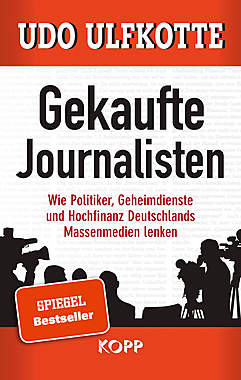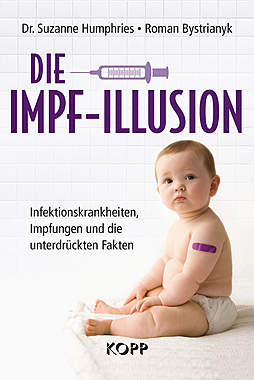- Kommentar: Gewinnwarnungen in den USA - yatri, 10.06.2001, 01:00
- Die Pappnase hab' ich mal bei N-TV gesehen. Mit ABSTAND der schlechteste seiner - marsch, 10.06.2001, 01:44
- Re: Kommentar: Gewinnwarnungen in den USA - Turon, 10.06.2001, 02:08
- Re: Ob AMD mit INTC langfristig mithalten kann wage ich zu bezweifeln - Rab, 10.06.2001, 14:41
- Das ist schon richtig, doch bleibt - Turon, 10.06.2001, 17:23
- Re: Ob AMD mit INTC langfristig mithalten kann wage ich zu bezweifeln - Rab, 10.06.2001, 14:41
- Die groĂźen Unternehmen treiben die kleinen aus dem Markt(dazu ein BSP) - Rab, 10.06.2001, 14:37
Re: Ob AMD mit INTC langfristig mithalten kann wage ich zu bezweifeln
INTC hat viel größere Kapazitäten und ein breiteres Geschäftsfeld.
Ob AMD genau so schnell neue Technologien entwickeln kann, läßt sich bezweifeln.
Hier eine News zu INTC
Sunday June 10 08:30 AM EDT
Intel Makes an Ultra-Tiny Chip
By JOHN MARKOFF The New York Times
Researchers at Intel, using conventional chip-making equipment, have made transistors that are just 80 atoms wide.
• The Business World: Oil Realm Embraces A Wired Economy
• My Money, My Life: For a Dad, Videoconference Ties That Bind
• For more news, visit the Technology Section
• Sign up to receive our free weekly Circuits e-mail newsletter.
Computer researchers have fashioned infinitesimally tiny electronic switches using conventional chipmaking equipment, demonstrating that the semiconductor industry will be able to continue shrinking its basic building blocks at a torrid pace at least until the end of this decade.
At a technical conference being held this weekend in Kyoto, Japan, a scientist for the Intel Corporation (NasdaqNM:INTC - news) reported that the company had successfully made a handful of silicon transistors no more than 70 to 80 atoms wide and 3 atoms thick. They are capable of switching on and off 1.5 trillion times a second, making them the world's fastest silicon transistor.
Although the Lilliputian switches do not represent the smallest experimental transistors yet invented, they are being hailed by the industry as a watershed because they were made using standard commercial techniques and the same materials used in today's microprocessors and memory chips.
The achievement indicates that researchers have once again found a way around technical barriers that might have slowed or stopped the phenomenal four-decade march that has led to the speed and power of today's computers.
"This is a very good piece of technical work," said Hon-Sum Philip Wong, an I.B.M. research scientist who presented a similar paper in Japan this weekend focusing on related technical problems in building transistors three generations in the future.
Although semiconductor engineers can now predict with great accuracy the amount of computing power that the transistor advance will bring with it by 2007, computer scientists cautioned that speculating about labor-saving applications or dazzling technological consequences can be more risky.
While the semiconductor manufacturing process underlying the modern microchip continues to improve steadily, specific new applications are frequently unpredictable. Some of the most prominent advances of recent years for example the electronic wristwatch, the personal computer and the Internet all largely came as surprises to experts.
The research will make make possible computer processor chips with as many as one billion transistors and 20 gigahertz speeds. That is more than 23 times the number of transistors used in Intel's current state-of-the-art Pentium 4 microprocessor, which has 42 million transistors and is capable of executing 1.7 billion instructions a second.
It will also make possible a generation of fingernail-sized memory chips that can each store four billion bits of data more than 333 copies of"Moby Dick."
Industry researchers said that shrinking the transistor size was a technical tour de force.
"It proves that Intel is a technical heavyweight," said G. Dan Hutcheson, president of VLSI Research, a semiconductor industry research firm based in San Jose, Calif."What Intel does so well is take a technology that is not meant to be extendable and pushing it past its limits, making computing incredibly cost-effective."
Moreover, the new chips will consume less than one volt of electricity perhaps less than half of today's Intel microprocessors making it likely that within half a decade the world's fastest processors will be portable and perhaps even hand- held.
Significantly, in an era when vast farms of Internet and World Wide Web servers are being blamed for a share of the nation's electrical power crunch, the Intel scientists reported that the power consumption of each new generation of chips is shrinking more quickly than the computer power is increasing.
Indeed, the dwindling power requirement of the Intel transistors represents one of the fortunate paradoxes of silicon-based computing: these transistors are able to switch on and off more than three times faster than today's microprocessors while consuming only slightly more than half as much electricity.
The Intel technical paper, which was presented this weekend at the Silicon Nano Electronics Workshop in Japan, comes as good news for an industry that in the last two years has been experiencing self-doubt about the longevity of its guiding principle, known as Moore's Law.
First noted by the Intel pioneer and cofounder Gordon E. Moore in 1965, the rule has held that the number of transistors that can be etched on a single chip of silicon doubles on average every 18 months.
But engineers and physicists note there is nothing technically or physically inevitable in the continued shrinking of the fundamental size of electronic circuitry. Indeed, as long ago as 1993, Dr. Moore himself publicly voiced his doubts about the permanence of the progression that received his name. In a speech given in Silicon Valley that year, he suggested that a process known as 0.25 micron might be the point at which the industry ran into fundamental physical limits. A micron is a millionth of a meter.
Nevertheless, chip makers blew past the 0.25-micron size two generations of chips ago roughly four years and now use exotic optical techniques to manufacture the most advanced processors and memory chips, which are based on transistors with 0.13-micron technology.
Now Intel scientists are saying that they can see their way at least three more generations into the future, to transistors with a 0.045-micron technology less than one-fifth the size limit that Dr. Moore speculated about.
"Everyone who predicts the end of Moore's Law has always been wrong," said Gerald Marcyk, Intel's director of components research technology manufacturing group in Hillsboro, Ore.
The new results are a dramatic contrast to a pessimistic article written by another Intel researcher two years ago in the journal Science.
The Intel scientist, Paul A. Packan, wrote that it was not clear whether the most common type of silicon transistor could be scaled down beyond the 0.13-micron generation of chips that began to appear last year, because semiconductor engineers had not found ways around basic physical limits.
Now that those potential physical limits have been surmounted, the researchers acknowledged they are in a realm where the switches are so small that arcane physical effects such as the quantum behavior of electrons become a factor, making chip-building as much an art as a science.
The Intel scientists performed some"heroic efforts" to make a handful of transistors work, Dr. Marcyk said, adding that the specific methods used were Intel manufacturing trade secrets.
One of the principal challenges in creating these kinds of switches is that their smallest dimensions are much smaller than the wavelengths of light generated by the machines that etch patterns on silicon wafers.
In conventional lithography, a mask is used with transparent areas and opaque areas, like a photographic negative. However, the light passing through the transparent areas bends slightly, leaving a slightly blurry image. As circuits shrink below the width of a lightwave, this becomes a profound problem.
However, engineers have found a way to turn that manufacturing defect into a remarkably precise tool through a process called"phase shifting," which makes use of interfering patterns of light to create ultrafine circuit lines.
The semiconductor industry's technical road map has generally forecast that integrated circuits will stay on their doubling path until 2014. But doubters have continued to emerge, suggesting either that there will be insurmountable technical obstacles or that at some point the cost of each new generation of semiconductor factory will soar astronomically.
The Intel researchers said they had been faced with another challenge besides building ever tinier chips. Dr. Marcyk said that each time he presented his results to Andrew S. Grove, Intel's chairman and co-founder, Dr. Grove insisted,"I want you to show me the limit."
"I have to tell him, `Andy, I haven't found the limit yet,'" he said.
<center>
<HR>
</center>
gesamter Thread:
 Mix-Ansicht
Mix-Ansicht

